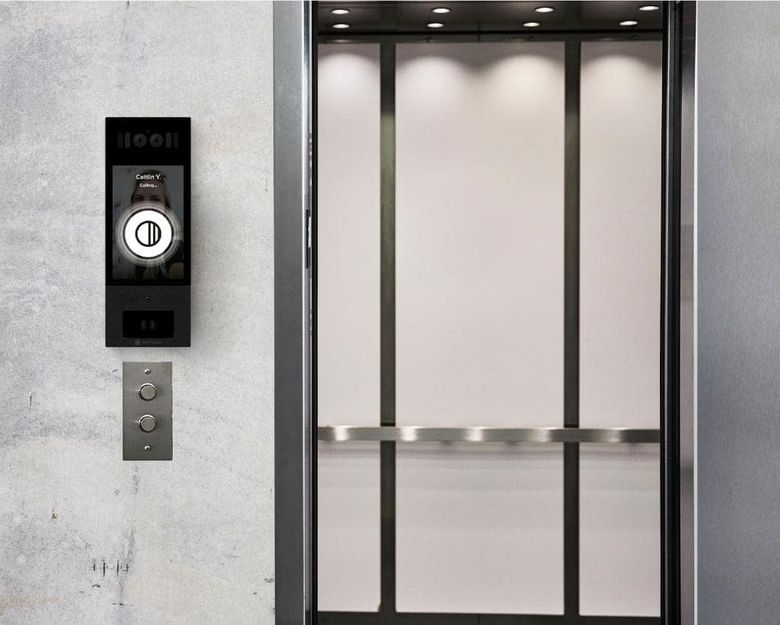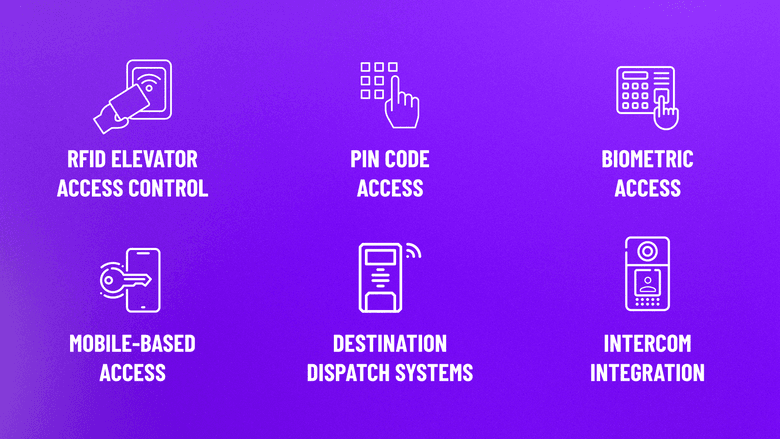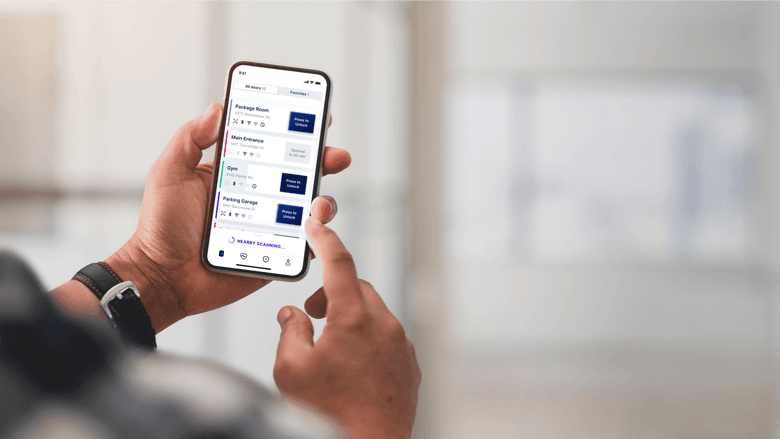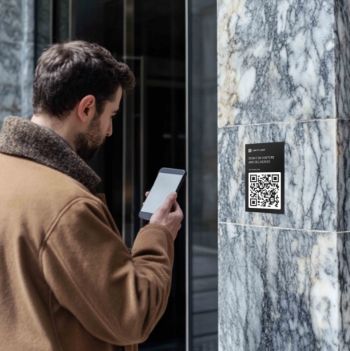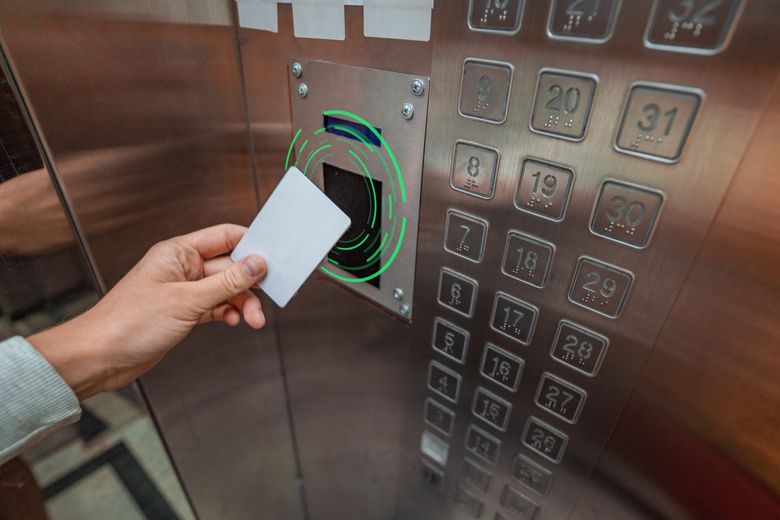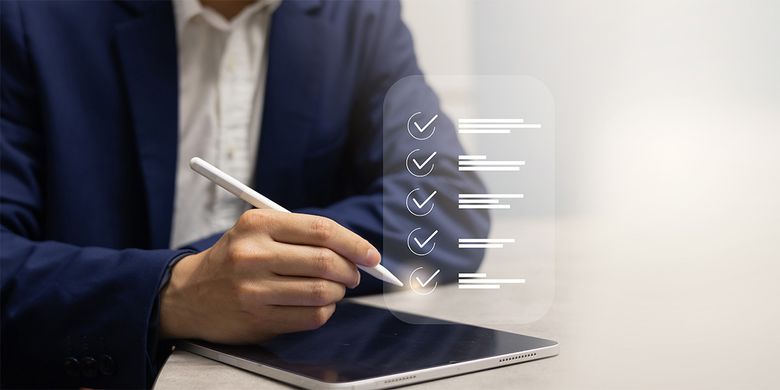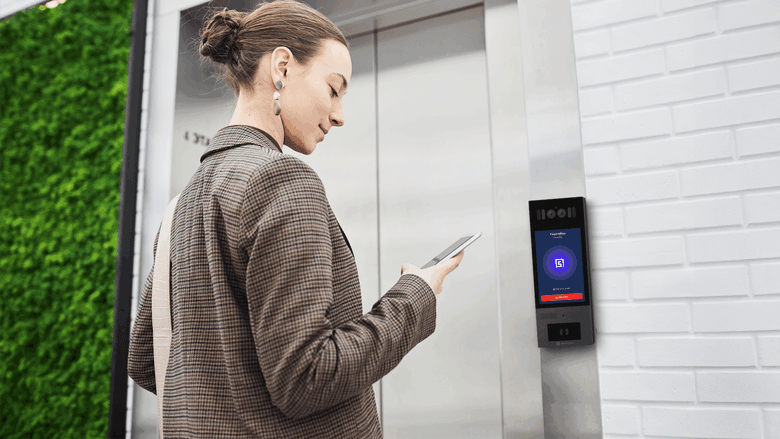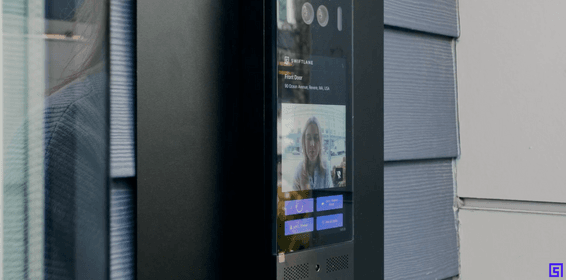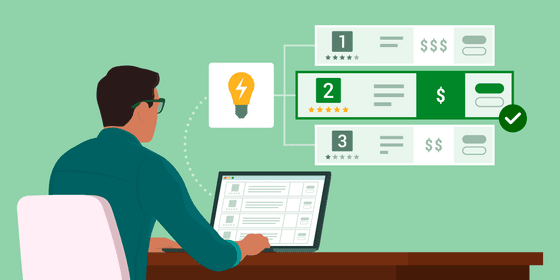In an era where security and seamless access are paramount, elevator access control has emerged as a crucial technology for modern buildings. Whether in commercial spaces, public facilities, residential towers, or mixed-use facilities, managing elevator access enhances security, optimizes movement, and improves user experience. But what exactly is elevator access control, and why is it becoming an essential component of smart buildings?
Table of Contents
- What is Elevator Access Control?
- Why is Elevator Access Control Important?
- How Elevator Access Control Works
- Types of Elevator Access Control Systems
- Smart Elevator Access Control
- Integration with Elevator Dispatch Systems
- Determining The Level of Elevator Access Control You Need
- The Future of Elevator Access Control
- Key Considerations When Implementing Elevator Access Control
- Swiftlane for Smart Elevator Access Control
What is Elevator Access Control?
Elevator access control is a system that regulates who can access specific floors within a building. Unlike traditional open-access elevators, which allow unrestricted floor selection, access-controlled elevators ensure that only authorized individuals can reach designated levels. These systems typically integrate with access cards, key fobs, PIN codes, biometric authentication, or mobile credentials to enable secure access for the right individuals to the right floors.
Common Use Cases for Elevator Access Control
- Corporate Offices: Multiple companies often share space in a single office building. Restricts access to specific floors based on employee roles or different employers. Tenants like to protect their space from uninvited traffic and secure their intellectual property.
- Residential Buildings: Enhance security by allowing only residents and guests to access designated floors. It provides an extra layer of security in case someone piggybacks their way into the front door uninvited. This feature is critical in buildings with floor-through residences in which the elevator opens into the resident’s home.
- Mixed-Use Buildings: Mixed-use buildings that combine retail, offices, public spaces, and residences are all the rage in urban planning. Elevator access control helps keep tenants in designated areas and keeps private floors of the building separate from public ones.
- Hotels and Hospitality: Ensure that guests can only reach their assigned floors, adding an extra layer of security and separating guests who may have access to a club level or VIP level in larger hotels.
- Healthcare Facilities: Restrict access to sensitive areas such as patient rooms, laboratories, or administrative offices that are separate from public areas.
Why is Elevator Access Control Important?
Security and efficiency are the two primary drivers behind elevator access control implementation. Here’s why organizations and property managers are increasingly adopting this technology:
- Enhanced Security: Restricting access to certain floors prevents unauthorized entry, reducing risks of theft, trespassing, or other security breaches.
- Improved Convenience: Tenants and employees can enjoy a seamless experience with automated access, eliminating the need for manual verification.
- Reduced Operating Costs: Many buildings can forgo lobby staff for checking IDs or directing guests and visitors by controlling access at the elevator and letting tenants handle visitors via a video intercom.
- Better Traffic Management: High-rise buildings with multiple tenants can prevent unnecessary congestion by ensuring that only authorized users can access designated floors.
- Compliance with Safety Regulations: Some industries and government facilities require access-controlled environments to comply with security and privacy standards.
How Elevator Access Control Works
The fundamental process of elevator access control involves:
- User Authentication: The system verifies the identity of an individual using access credentials such as a PIN number, keycard, biometric scan – typically via facial recognition, or mobile authentication. This requires a choice of hardware such as numeric keypad, an RFID reader, or a video intercom.
- Access Verification: The system checks if the user credential is in its database. Once authenticated, the system checks permissions to determine which floors the individual can access.
- Floor Selection Control: The user is either automatically taken to an approved floor or allowed to select from a limited range of accessible floors.
- System Logging: Many systems maintain a digital log of access activity for security audits and tracking purposes.
Types of Elevator Access Control Systems
Different setups cater to varying security needs. Common types include:
- RFID Elevator Access Control: Requires swiping or tapping an RFID keycard or key fob to authenticate access. This method is extremely popular in commercial office buildings where all tenants are issued employee ID cards or badges that get them into the building lobby, onto individual floors, and into elevators.
- PIN Code Access: Users enter a unique PIN to activate the elevator. This is popular in residential, commercial, and institutional settings. Tenants don’t need to carry a key or credential. Property managers and tenants can also set up temporary or time-limited pins for guests or service workers.
- Biometric Access: This uses fingerprints, facial recognition, or retina scans for tenant or employee authentication. Facial recognition is often considered the most practical because it can handle high volumes of users in a sanitary, hands-free manner. This is popular with class A and B office space, salon suites, and multi-tenant residential buildings.
- Mobile-Based Access: Integrates with smartphone apps for secure, touchless access. Tenants can also use their mobile app from anywhere to let in guests, visitors, deliveries, nannies, pet care, cleaners, etc.
- Destination Dispatch Systems: This optional feature of elevator access control assigns elevators based on pre-validated credentials. It groups people by floor into certain elevators to minimize stop-and-go traffic, optimizing efficiency in large buildings. This technology is rapidly becoming the standard for office tower retrofits.
- Intercom integration: The elevator integrates with the building intercom for guests and visitors. If a tenant authorizes entry for a visitor, the system can also permit the elevator to take the visitor to that tenant’s floor.
Smart Elevator Access Control
With the rise of smart building technology, elevator access control is gaining functionality associated with smart buildings. Some of these features include:
- Smartphone Remote Access: Authorized users can unlock elevator access using their smartphones, reducing the need for physical keys or fobs.
- Remote Access Management: Building managers can grant or revoke access in real time via cloud-based management platforms that tie together building intercoms, parking access, and elevator access in a common system.
- Multi-System Integration: Mobile access can integrate with security cameras, intercoms, and visitor management systems for enhanced security.
Integration with Elevator Dispatch Systems
Modern smart elevator access control today can seamlessly pair with the state of the art method of controlling elevators in buildings with multiple elevator banks: elevator dispatch systems. These assign tenants to particular elevator banks using computations that improve speed and efficiency versus elevators that work on a first-come, first-served principle.
Grouping Passengers Efficiently
- Traditional elevators operate on a first-come, first-served basis, leading to inefficient trips with frequent stops.
- Destination Dispatch Systems require passengers to enter their floor before boarding, grouping people going to the same or nearby floors in the same elevator. When paired with elevator access control, the system can automatically designate elevators when a tenant or visitor requests elevator access.
Reducing Wait and Travel Times
- By assigning the most optimal elevator based on passenger requests, dispatch systems minimize travel distances.
- This means fewer elevator starts and stops, reducing mechanical wear and saving electricity. They have become a standard in green buildings, such as those with LEED certification.
Intelligent Traffic Prediction
- Modern systems use AI and machine learning to analyze building traffic patterns.
- They can anticipate peak usage times and pre-position elevators strategically, reducing idle energy consumption.
Determining The Level of Elevator Access Control You Need
How to configure your elevator access control system depends on factors such as the type and size of building you have, the amount of foot traffic, and the level of security you want to provide.
Prevent Tailgating
If your building has high-security needs or significant foot traffic that is hard to manage, you may want to prevent unauthorized people from even getting to your elevator banks in the first place. In this situation, it is common to install automatic gates in the building lobby that separate the general public from the elevators. Tenants tap their ID or keyfob or the building uses biometrics like face ID to open the gates. Visitors may receive a QR code or go to a front desk to request entry.
Prevent Calling the Elevator
Even if your building doesn’t have lobby gates, you can prevent people from calling the elevator by requiring a key or credential at the elevator call buttons. This is an added layer of security beyond putting the credential reader inside the elevator. It is often used when the elevator is programmed to give occupants access to any floor and the main access control solution is to prevent unauthorized users from calling the elevator.
Locked Private Floors
Building managers may decide they want locked floors that can only be accessed by authorized users for that specific floor. Typical cases include residential towers where the elevator opens directly into a residential unit, office buildings with multiple corporate tenants, and hotels – especially those with VIP or Club Level floors that are only for select guests. With these systems, a user must hold a credential like a key card that is authorized to access a particular floor.
Dispatch Systems
Dispatch systems work in concert with the concept of Locked Floors. In a dispatch system, a user credential provides access only to certain authorized floors of the building. The user can only choose from among those floors, and the elevator will be preprogrammed to go to that floor. Visitors can check in with a front desk to be assigned a floor or use a QR code sent in advance from the building’s tenants.
The Future of Elevator Access Control
As technology evolves, we can expect further advancements in elevator access control, including AI-driven security, voice-activated access, and enhanced integration with IoT-based building management systems. The shift towards contactless and mobile-first access solutions will continue to redefine how people navigate secured spaces.
By adopting the right access control system, businesses and property managers can significantly enhance security, convenience, and operational efficiency in their buildings. As more organizations prioritize smart security solutions, elevator access control will remain a cornerstone of modern building management.
Key Considerations When Implementing Elevator Access Control
When choosing an elevator access control solution, consider the following factors:
- Scalability: The system should accommodate current and future expansion needs.
- Compatibility: Ensure seamless integration with existing security infrastructure, such as access control systems and surveillance.
- User Experience: A frictionless and intuitive system encourages user adoption and user satisfaction.
- Compliance and Regulations: Verify that the solution adheres to industry standards and data privacy laws.
- Emergency Access: Plan for fail-safes to allow emergency personnel or maintenance staff to override restrictions when necessary.
Swiftlane for Smart Elevator Access Control
Through our intercoms, keypads, and RFID card readers, Swiftlane offers hardware that can provide a smart elevator access control solution for all types of buildings. Connected through our cloud-based management platform, this hardware integrates with our solutions for building entryways, internal doors (mailrooms, gyms, restrooms, pools, etc.), and parking area gates.
Swiftlane’s system includes a combination of access readers, controllers, and power systems to manage elevator security. Here’s what each piece does:
1. Fob Reader
- Installed near the elevator call button or inside the elevator, the reader detects RFID, NFC or Bluetooth credentials via fobs or the Swiftlane mobile app..
- Requires an authorized fob or mobile credential to activate elevator access.
- Restricts users to specific floors based on their access level.
2. Intercom System
- Used for visitor access—guests can call a resident or office staff via the Swiftlane video intercom.
- Once verified, the resident can unlock elevator access remotely.
- Can be installed at the building entrance or outside the elevator for visitor verification at elevators in large commercial buildings.
3. Door Controller
- This is the main component that manages elevator permissions.
- Connects to the building’s access control system to control which users can access which floors.
- Works with fob readers, keypads, mobile access, and intercoms to grant or deny access.
4. Power Supply
- Provides continuous power to all components. Many Swiftlane components are easily powered with a single plug-in of Power over Ethernet (PoE).
5. Floor Call Button Access
Users can access only authorized floors by presenting credentials at Swiftlane hardware. Everything is mapped on the back end
6. Elevator Call Button Control
Users can call the elevator only on floors where they have access.
7. Dashboard Management
Admins configure floors and user access via the Swiftlane Dashboard.

